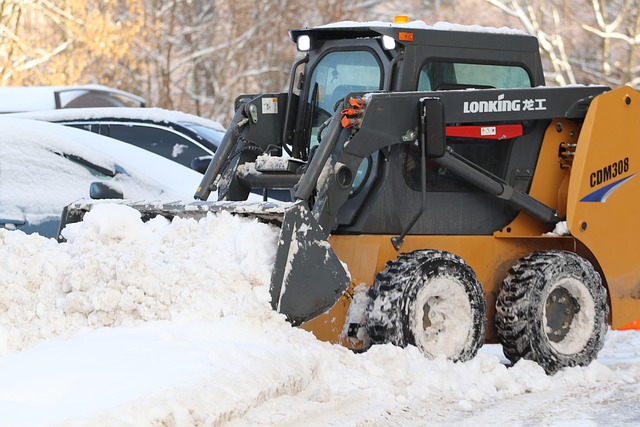Snow Blowers
Winter weather brings snow-covered driveways and walkways that need regular clearing. Snow blowers provide an efficient alternative to manual shoveling, offering various power options and features to handle different snow conditions. These machines range from lightweight electric models suitable for small areas to powerful gas-powered units designed for large driveways and heavy snowfall.

How Snow Blowers Work and Their Key Components
Snow blowers operate using rotating augers that collect snow and direct it through a chute system. Single-stage models use one auger that both collects and throws snow, making them ideal for lighter snowfall on paved surfaces. Two-stage snow blowers feature separate augers for collection and an impeller for throwing snow greater distances, providing more power for heavy or wet snow conditions.
The chute control system allows users to direct snow discharge in specific directions, while adjustable skid shoes help protect surfaces and maintain proper clearance height. Engine size, measured in cubic centimeters for gas models or amperage for electric versions, determines the machine’s power output and snow-handling capacity.
Electric Snow Blower Advantages and Considerations
Electric snow blower models offer several benefits for homeowners with smaller properties. These units start instantly without pull-cord mechanisms, operate quietly compared to gas engines, and require minimal maintenance beyond basic cleaning and storage. Corded electric models provide consistent power without fuel mixing or engine warm-up periods.
Battery-powered electric snow blowers offer greater mobility without cord limitations, though runtime depends on battery capacity and snow conditions. Most electric models handle snow depths up to 12 inches effectively, making them suitable for regular maintenance during winter months. Weight advantages make electric units easier to maneuver and store in compact spaces.
Gas-Powered Snow Blower Features and Capabilities
Gas-powered snow blowers deliver maximum clearing power for challenging winter conditions. These units typically feature larger clearing widths, ranging from 24 to 36 inches, and can handle snow depths exceeding 20 inches. Self-propelled drive systems reduce operator effort when navigating slopes or heavy snow accumulations.
Two-stage gas models include heated hand grips, electric start options, and adjustable auger height settings for different surface types. Track-driven versions provide superior traction on steep inclines or icy conditions compared to wheeled models. Gas engines offer unlimited runtime with proper fuel supply, making them suitable for large properties or commercial applications.
| Snow Blower Type | Brand/Model | Price Range | Key Features |
|---|---|---|---|
| Electric Corded | Snow Joe SJ624E | $150-$200 | 21-inch width, 13-amp motor |
| Battery Electric | Greenworks 2600402 | $300-$400 | 20-inch width, 40V battery |
| Gas Single-Stage | Toro Power Clear 821 | $400-$500 | 21-inch width, recoil start |
| Gas Two-Stage | Ariens Deluxe 28 | $900-$1,200 | 28-inch width, electric start |
Price estimates mentioned in this article are based on the latest available information but may change over time. Independent research is advised before making financial decisions.
Maintenance Requirements and Seasonal Care
Proper maintenance extends snow blower lifespan and ensures reliable operation during winter months. Gas models require regular oil changes, spark plug replacement, and fuel stabilizer treatment during off-season storage. Air filter cleaning or replacement maintains engine performance, while greasing moving parts prevents premature wear.
Electric snow blowers need minimal maintenance beyond cleaning debris from auger housing and checking electrical connections. Battery models require proper charging cycles and temperature-controlled storage to maintain battery life. All units benefit from annual inspection of belts, cables, and safety mechanisms before winter season begins.
Choosing the Right Snow Blower for Your Needs
Snow blower selection depends on property size, typical snowfall amounts, and user physical capabilities. Properties under 2,000 square feet with moderate snowfall often work well with electric models, while larger driveways or heavy snow regions benefit from gas-powered units. Consider storage space, noise restrictions, and maintenance preferences when making decisions.
Clearing width affects efficiency, with wider models covering more area per pass but requiring more storage space. Adjustable features like chute rotation, discharge distance, and speed settings provide versatility for different snow conditions. Safety features including emergency stops and protective shields ensure safe operation throughout winter months.
Snow blowers represent a significant investment in winter property maintenance, offering time savings and reduced physical strain compared to manual snow removal. Understanding the differences between electric and gas models, along with proper maintenance practices, helps ensure years of reliable service. Consider your specific needs, budget, and local snow conditions when selecting the most appropriate snow blower for your situation.




